Henry Wirz Confederate Monument
Introduction
Text-to-speech Audio
Images
[Washington, D.C. Reading the death warrant to Wirz on the scaffold]
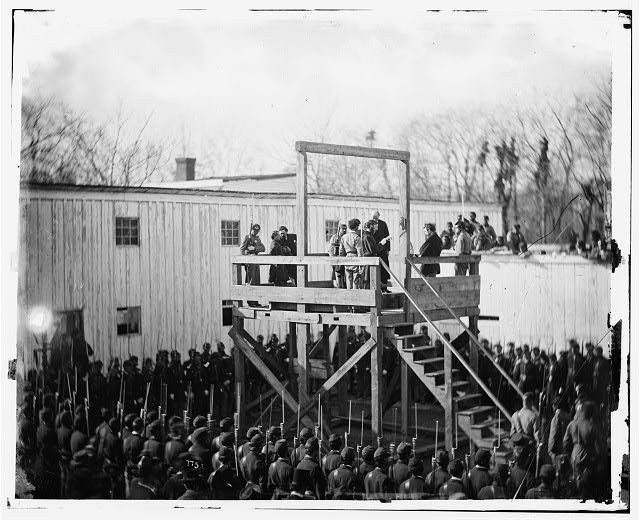
[Washington, D.C. Hooded body of Captain Wirz hanging from the scaffold]
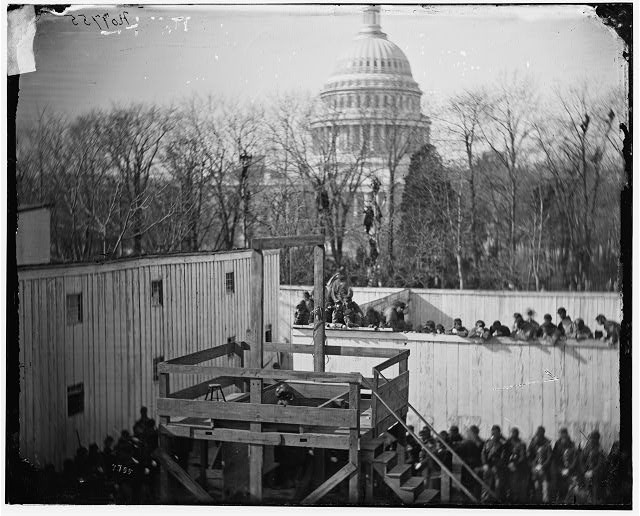
Text on Bottom of Wirz Monument
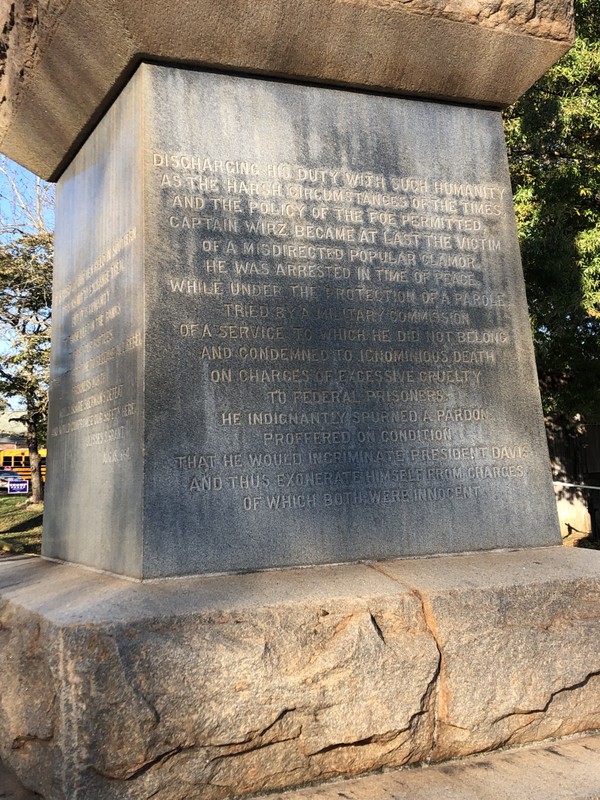
New York Times Reporting on the Wirz Monument
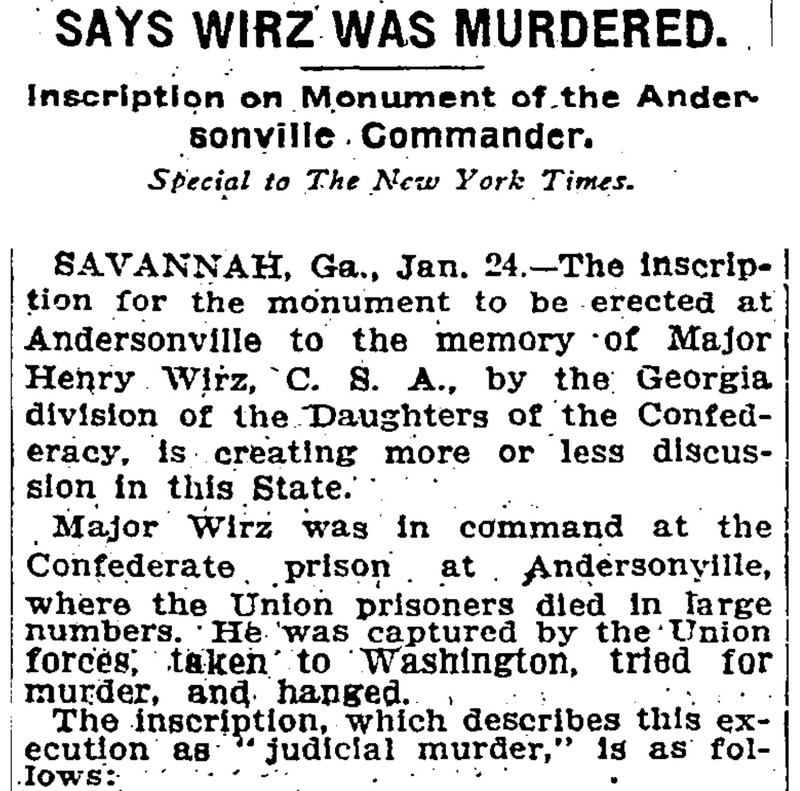
Inscription on the Wirz Monument
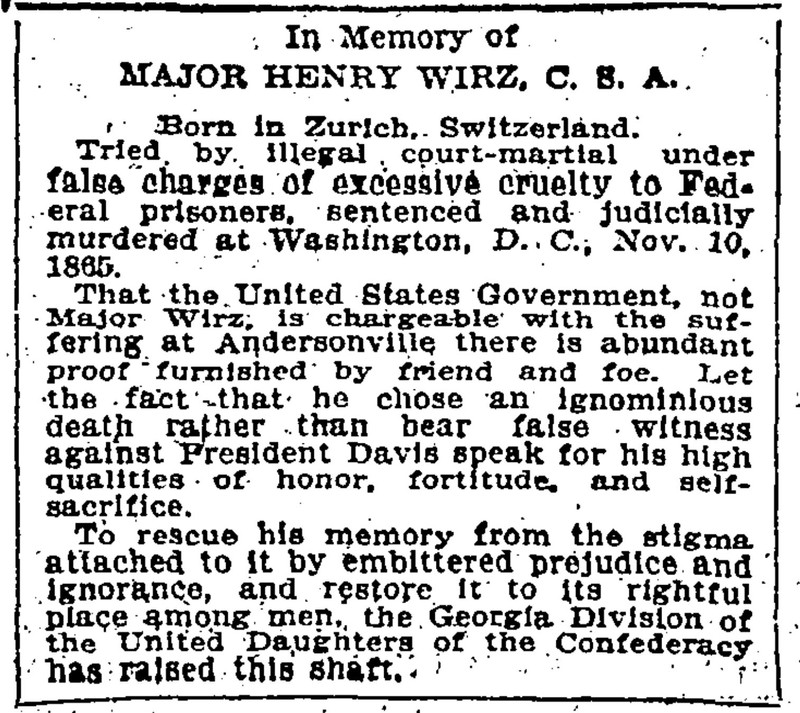
Captain Henry Wirz
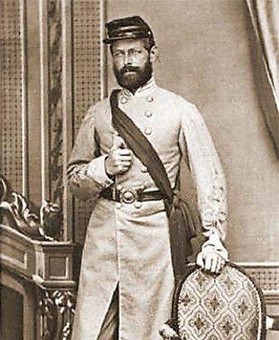
"the Demon of Andersonville" Caricature depicting Wirz after the war
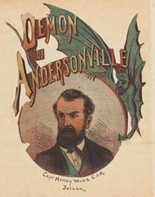
Wirz Monument today
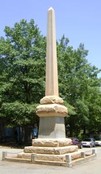
The Trial of Henry Wirz, Harper's Weekly
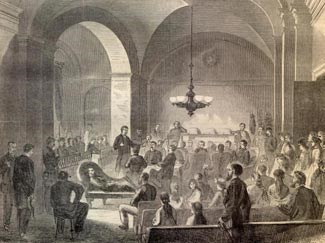
Backstory and Context
Text-to-speech Audio
The town of Andersonville was selected as an ideal site for a prison camp to house captured Union soldiers because of the town’s remote location. About sixty miles from Macon, and ten miles from Americus, the site was considered isolated and secure. Sergeant Henry Wirz, who previously worked on the prison management team for the Confederacy in Richmond, took command of the prison at Andersonville on March 27, 1864. He expanded the original stockade of the prison (named Camp Sumter), ordering construction of a deadline to keep prisoners away from the stockade walls and leading daily operations within the prison.[1] Wirz governed the prison with threats including withholding food from prisoners, corporal punishment, or death.
On the August 23, 1865, a special military commission was appointed in Washington D.C. to preside over the trial of Captain Wirz for “maliciously, wilfully, and traitorously” conspiring to “injure the health and destroy the lives” of soldiers serving the Union who were held prisoners by the Confederate States.[2] The commission accused Wirz of confining soldiers in unhealthy quarters within the prison and exposing them to unbearable conditions, leading to thousands of deaths. As a military commander, he was “duty bound” to care for and treat prisoners in accordance with the law of war. Wirz, whose “evil neglect” and “wicked and cruel purpose,” had tortured prisoners with cruel and unusual punishment and deliberately spread disease within the camp.[3] The court found Wirz guilty of war crimes. The court sentenced Wirz to be hanged, writing that “at no time a darker field of crime than that of Andersonville” had existed.[4]
The Georgia Chapter of the United Daughters of the Confederacy proposed a monument to Wirz in the first decade of the twentieth century. The annual convention of the UDC voted to designate donations to the “noble and patriotic enterprise” of building the monument to Wirz in 1906, calling him a noble hero whose “cruel execution” was a travesty. Interestingly, the Grand Army of the Republic, an organization of Union veterans, rejected the monument proposal.[5] The Georgia division of the UDC proposed to “rescue his memory” and restore Wirz to his “rightful place” among military men.[6] The monument displays a brief reflection the life of Henry Wirz as well as quotations from Ulysses S. Grant and Jefferson Davis. It stands today as a symbol of the enduring power of Confederate memory in the rural South and the horrors inflicted by Wirz and his fellow officers upon Union prisoners.
Sources
[1] “Captain Henry Wirz,” Andersonville National Historic Site, National Park Service, July 21, 2020. Accessed December 2, 2020. https://www.nps.gov/ande/learn/historyculture/captain_henry_wirz.htm
[2] “Trial of Henry Wirz: A Congressionally Mandated Report Summarizing the Military Commision’s Proceedings.” United States, 40th Congress, 2nd session, 1867-1868. House Executive Document No. 23, December 7, 1867, pg 3. From Library of Congress, Military Legal Resources https://www.loc.gov/rr/frd/Military_Law/Wirz_trial.html (accessed December 2, 2020).
[3] “Trial of Henry Wirz,” page 5.
[4] “Trial of Henry Wirz,” page 813.
[5] United Daughters of the Confederacy, Minutes of the Thirteenth Annual Convention of the United Daughters of the Confederacy (Opelika: Post Publishing Co., 1907): 32, 37. University of Wisconsin, HathiTrust, accessed December 2, 2020. https://babel.hathitrust.org/cgi/pt?id=wu.89062335260&view=1up&seq=11
[6] “Daughers of Lost Cause Seek to Restore a Name: Proposed Monument to Major Wirz, Commander of Andersonville Prison.” New York Times (1857-1922), February 2, 1908. ProQuest Historical Newspapers. https://www-proquest-com.librarylink.uncc.edu/docview/96826467?accountid=14605 (accessed December 2, 2020).
Library of Congress Prints and Photographs Division Washington, D.C.
Library of Congress Prints and Photographs Division Washington, D.C. 20540
Personal Photograph, Erin M. Del Giudice, November 14, 2020
"Says Wirz was Murdered: Inscription on the monument of The Andersonville Commander," New York Times, January 25, 1908; ProQuest Historical Newspapers
"Says Wirz was Murdered: Inscription on the monument of The Andersonville Commander," New York Times, January 25, 1908; ProQuest Historical Newspapers
nps.gov
nps.gov
nps.gov
nps.gov
